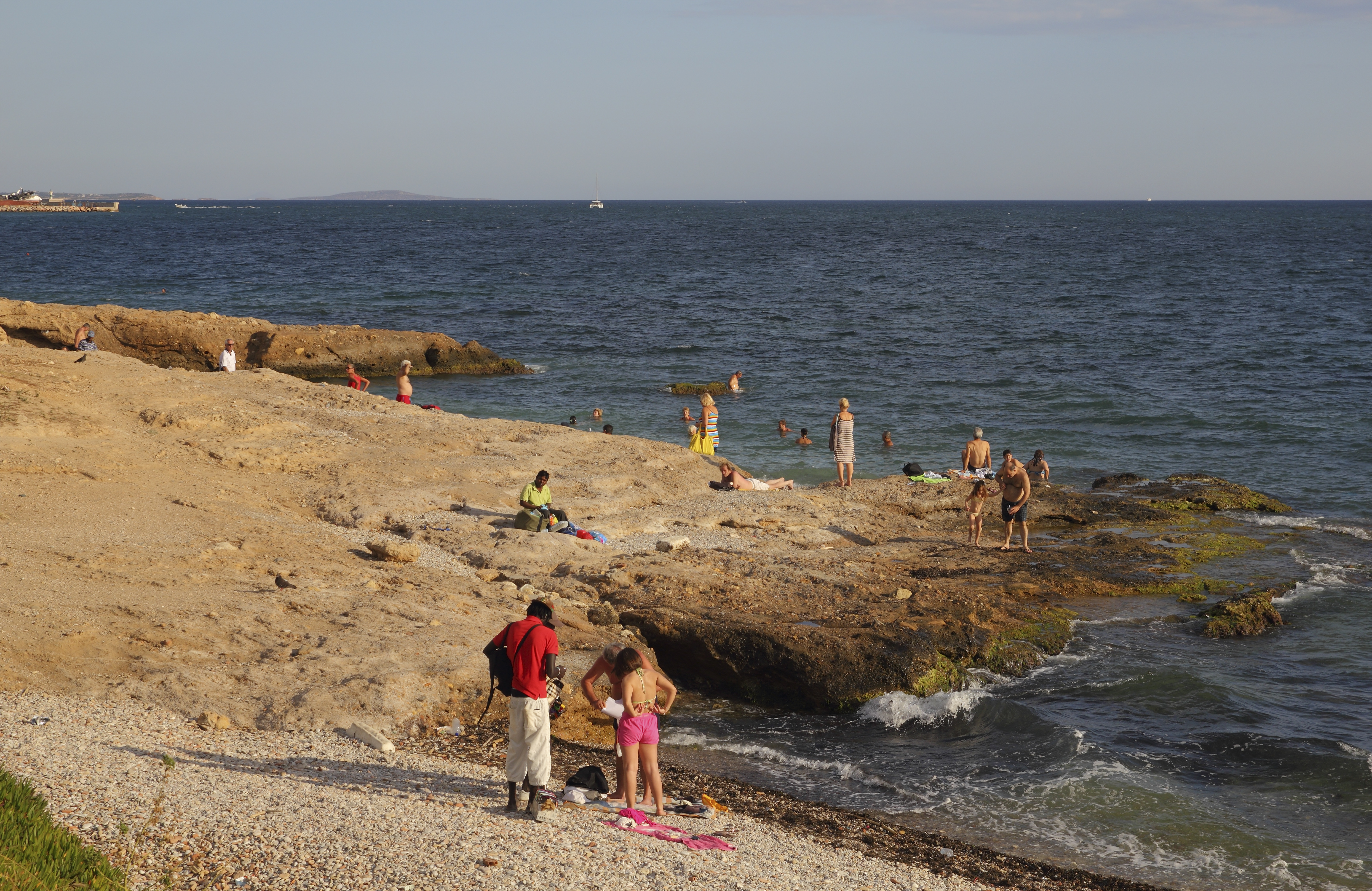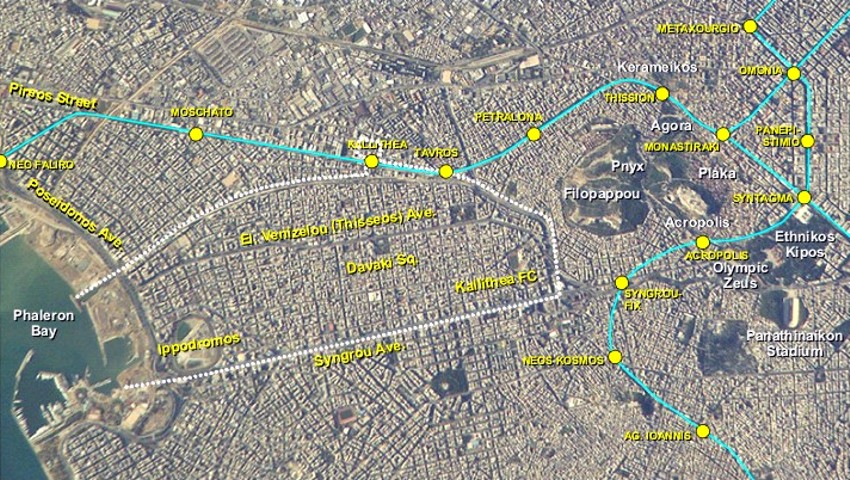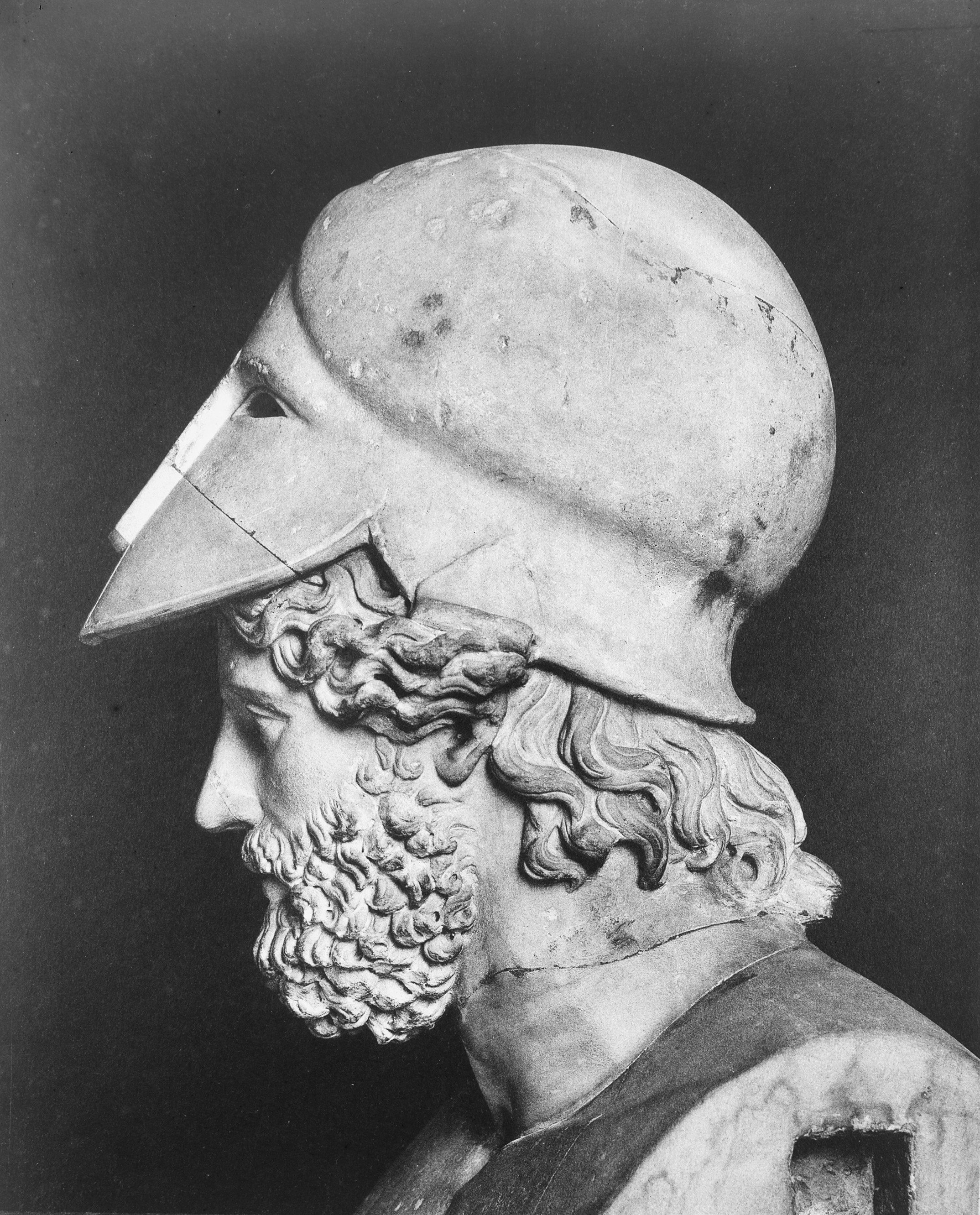|
Phalerum
Phalerum or Phaleron ( ''()'', ; ''()'', ) was a port of Ancient Athens, 5 km southwest of the Acropolis of Athens, on a bay of the Saronic Gulf. The bay is also referred to as "Bay of Phalerum" ( el, Όρμος Φαλήρου '').'' The area of Phalerum is now occupied by the towns Palaio Faliro, Kallithea, Moschato and Neo Faliro, all of which are part of the Athens agglomeration. Phalerum was the major port of Athens before Themistocles had the three rocky natural harbours by the promontory of Piraeus developed as alternative, from 491 BC. It was said that Menestheus set sail with his fleet to Troy from Phalerum, as so did Theseus when he sailed to Crete after the death of Androgeus. Recently, archaeologists have uncovered what appear to be traces of ancient Athens’s first port before the city’s naval and shipping centre was moved to Piraeus. The site, some 350 m from the modern coastline, contained pottery, tracks from the carts that would have served the port, an ... [...More Info...] [...Related Items...] OR: [Wikipedia] [Google] [Baidu] |
Demetrius Of Phalerum
Demetrius of Phalerum (also Demetrius of Phaleron or Demetrius Phalereus; grc-gre, Δημήτριος ὁ Φαληρεύς; c. 350 – c. 280 BC) was an Athenian orator originally from Phalerum, an ancient port of Athens. A student of Theophrastus, and perhaps of Aristotle, he was one of the first members of the Peripatetic school of philosophy. Demetrius had been a distinguished statesman who was appointed by Cassander, the King of Macedon, to govern Athens, where Demetrius ruled as sole ruler for ten years. During this time, he introduced important reforms of the legal system, while also maintaining pro-Cassander oligarchic rule. Demetrius was exiled by his enemies in 307 BC. He first went to Thebes, and then, after 297 BC, went to the court of Alexandria. He wrote extensively on the subjects of history, rhetoric, and literary criticism. He is not to be confused with his grandson, also called Demetrius of Phaleron, who probably served as regent of Athens between 262 and 255, ... [...More Info...] [...Related Items...] OR: [Wikipedia] [Google] [Baidu] |
Ancient Athens
Athens is one of the oldest named cities in the world, having been continuously inhabited for perhaps 5,000 years. Situated in southern Europe, Athens became the leading city of Ancient Greece in the first millennium BC, and its cultural achievements during the 5th century BC laid the foundations of Western civilization. During the early Middle Ages, the city experienced a decline, then recovered under the later Byzantine Empire and was relatively prosperous during the period of the Crusades (12th and 13th centuries), benefiting from Italian trade. Following a period of sharp decline under the rule of the Ottoman Empire, Athens in the 19th century as the capital of the independent and self-governing Greek state. Name The name of Athens, connected to the name of its patron goddess Athena, originates from an earlier Pre-Greek language. The origin myth explaining how Athens acquired this name through the legendary contest between Poseidon and Athena was described by Herodotus,Hero ... [...More Info...] [...Related Items...] OR: [Wikipedia] [Google] [Baidu] |
Palaio Faliro
Palaio Faliro ( el, Παλαιό Φάληρο, ; Katharevousa: Palaion Faliron, Παλαιόν Φάληρον, meaning "Old Phalerum") is a coastal district and a municipality in the southern part of the Athens agglomeration, Greece. At the 2011 census it had 64,021 inhabitants. Geography Palaio Faliro is situated on the east coast of the Phalerum Bay, a bay of the Saronic Gulf, 6 km southwest of Athens city centre. The municipality has an area of 4.574 km2. It is surrounded by other districts of Athens: Kallithea, Nea Smyrni, Agios Dimitrios and Alimos. The Pikrodafni stream flows into sea on the border of Palaio Faliro and Alimos. Palaio Faliro is at the Northwest part of what is referred to as the Athens Riviera. The seaside area was redeveloped for the 2004 Summer Olympics, and now contains a seaside promenade, several sports venues, a marina and the Naval Tradition Park, where museum ships are exhibited. The neighbourhoods of Palaio Faliro are Amfithea, Batis, Ed ... [...More Info...] [...Related Items...] OR: [Wikipedia] [Google] [Baidu] |
Kallithea
Kallithea (Greek: Καλλιθέα, meaning "beautiful view") is a district of Athens and a municipality in south Athens regional unit. It is the eighth largest municipality in Greece (96,118 inhabitants, 2021 census) and the fourth biggest in the Athens urban area (following municipalities of Athens, Piraeus and Peristeri). Additionally, it is the 2nd most densely populated municipality in Greece and one of the most densely populated cities in the world, with . The municipality has an area of . Location The center of Kallithea (Davaki Square) lies at a distance of to the south of the Athens city center (Syntagma Square) and to the north-east of the Piraeus (photo 1). Kallithea extends from the Filopappou and Sikelia hills in the north to Phaleron Bay in the south; its two other sides consist of Syngrou Avenue to the east (border to the towns of Nea Smyrni and Palaio Faliro), and the Ilisos River to the west (border to the towns of Tavros and Moschato) (photo 2). The site ... [...More Info...] [...Related Items...] OR: [Wikipedia] [Google] [Baidu] |
Themistocles
Themistocles (; grc-gre, Θεμιστοκλῆς; c. 524–459 BC) was an Athenian politician and general. He was one of a new breed of non-aristocratic politicians who rose to prominence in the early years of the Athenian democracy. As a politician, Themistocles was a populist, having the support of lower-class Athenians, and generally being at odds with the Athenian nobility. Elected archon in 493 BC, he convinced the polis to increase the naval power of Athens, a recurring theme in his political career. During the first Persian invasion of Greece he fought at the Battle of Marathon (490 BC) and was possibly one of the ten Athenian ''strategoi'' (generals) in that battle. In the years after Marathon, and in the run-up to the second Persian invasion of 480–479 BC, Themistocles became the most prominent politician in Athens. He continued to advocate for a strong Athenian Navy, and in 483 BC he persuaded the Athenians to build a fleet of 200 triremes; these prove ... [...More Info...] [...Related Items...] OR: [Wikipedia] [Google] [Baidu] |
Musaeus Of Athens
Musaeus of Athens ( el, Μουσαῖος, ''Mousaios'') was a legendary polymath, philosopher, historian, prophet, seer, priest, poet, and musician, said to have been the founder of priestly poetry in Attica. He composed dedicatory and purificatory hymns and prose treatises, and oracular responses. Attributed works Herodotus reports that, during the reign of Peisistratus at Athens, the scholar Onomacritus collected and arranged the oracles of Musaeus but inserted forgeries of his own devising, later detected by Lasus of Hermione. The mystic and oracular verses and customs of Attica, especially of Eleusis, are connected with his name. A ''Titanomachia'' and ''Theogonia'' are also attributed to him by Gottfried Kinkel. Reputation in antiquity In 450 BC, the playwright Euripides in his play '' Rhesus'' describes him thus: "Musaeus, too, thy holy citizen, of all men most advanced in lore." In 380 BC, Plato says in his ''Ion'' that poets are inspired by Orpheus and Musaeus but the gr ... [...More Info...] [...Related Items...] OR: [Wikipedia] [Google] [Baidu] |
Hellenic Navy
The Hellenic Navy (HN; el, Πολεμικό Ναυτικό, Polemikó Naftikó, War Navy, abbreviated ΠΝ) is the naval force of Greece, part of the Hellenic Armed Forces. The modern Greek navy historically hails from the naval forces of various Aegean Islands, which fought in the Greek War of Independence. During the periods of monarchy (1833–1924 and 1936–1973) it was known as the Royal Hellenic Navy (, , abbreviated ΒΝ). The Hellenic Navy is a Green-water navy. The total displacement of the fleet is approximately 150,000 tons and it is the 22nd largest navy in the world by total number of vessels. The HN also operates a number of naval aviation units. The motto of the Hellenic Navy is "Μέγα τὸ τῆς θαλάσσης κράτος" from Thucydides' account of Pericles' oration on the eve of the Peloponnesian War. At the Perseus Project. This has been translated as "The rule of the sea is a great matter". The Hellenic Navy's emblem consists of an anchor in ... [...More Info...] [...Related Items...] OR: [Wikipedia] [Google] [Baidu] |
Balkan Wars
The Balkan Wars refers to a series of two conflicts that took place in the Balkan States in 1912 and 1913. In the First Balkan War, the four Balkan States of Greece, Serbia, Montenegro and Bulgaria declared war upon the Ottoman Empire and defeated it, in the process stripping the Ottomans of its European provinces, leaving only Eastern Thrace under the Ottoman Empire's control. In the Second Balkan War, Bulgaria fought against the other four original combatants of the first war. It also faced an attack from Romania from the north. The Ottoman Empire lost the bulk of its territory in Europe. Although not involved as a combatant, Austria-Hungary became relatively weaker as a much enlarged Serbia pushed for union of the South Slavic peoples. The war set the stage for the Balkan crisis of 1914 and thus served as a "prelude to the First World War". By the early 20th century, Bulgaria, Greece, Montenegro and Serbia had achieved independence from the Ottoman Empire, but large eleme ... [...More Info...] [...Related Items...] OR: [Wikipedia] [Google] [Baidu] |
World War I
World War I (28 July 1914 11 November 1918), often abbreviated as WWI, was one of the deadliest global conflicts in history. Belligerents included much of Europe, the Russian Empire, the United States, and the Ottoman Empire, with fighting occurring throughout Europe, the Middle East, Africa, the Pacific, and parts of Asia. An estimated 9 million soldiers were killed in combat, plus another 23 million wounded, while 5 million civilians died as a result of military action, hunger, and disease. Millions more died in genocides within the Ottoman Empire and in the 1918 influenza pandemic, which was exacerbated by the movement of combatants during the war. Prior to 1914, the European great powers were divided between the Triple Entente (comprising France, Russia, and Britain) and the Triple Alliance (containing Germany, Austria-Hungary, and Italy). Tensions in the Balkans came to a head on 28 June 1914, following the assassination of Archduke Franz Ferdin ... [...More Info...] [...Related Items...] OR: [Wikipedia] [Google] [Baidu] |
USS Charrette (DD-581)
USS ''Charrette'' (DD-581) was a of the United States Navy, named for Lieutenant George Charrette (1867–1938), who was awarded the Medal of Honor for heroism during the Spanish–American War. Entering service during World War II, she spent her career in the Pacific theatre. Placed in reserve following the war, ''Charette'' was transferred to the Kingdom of Greece in 1959 and renamed ''Velos'' (D16), remaining in service till 1991 before being preserved as a museum ship at Palaio Faliro, Athens. Service history United States Navy ''Charrette'' was launched on 3 June 1942 by the Boston Navy Yard, sponsored by Mrs G. Charrette. The ship was commissioned on 18 May 1943. ''Charrette'' sailed from New York on 20 September 1943 to escort the aircraft carrier to Pacific service. Arriving at Pearl Harbor 9 October, ''Charrette'' took part in training exercises until 10 November, when she put to sea with Task Force 50 (TF 50), for air raids on Japanese bases in the Marshalls. T ... [...More Info...] [...Related Items...] OR: [Wikipedia] [Google] [Baidu] |
Neighbourhood
A neighbourhood (British English, Irish English, Australian English and Canadian English) or neighborhood (American English; see spelling differences) is a geographically localised community within a larger city, town, suburb or rural area, sometimes consisting of a single street and the buildings lining it. Neighbourhoods are often social communities with considerable face-to-face interaction among members. Researchers have not agreed on an exact definition, but the following may serve as a starting point: "Neighbourhood is generally defined spatially as a specific geographic area and functionally as a set of social networks. Neighbourhoods, then, are the spatial units in which face-to-face social interactions occur—the personal settings and situations where residents seek to realise common values, socialise youth, and maintain effective social control." Preindustrial cities In the words of the urban scholar Lewis Mumford, "Neighbourhoods, in some annoying, inchoate f ... [...More Info...] [...Related Items...] OR: [Wikipedia] [Google] [Baidu] |
Mine Planter (vessel)
Mine planter and the earlier "torpedo planter" was a term used for mine warfare ships into the early days of World War I. In later terminology, particularly in the United States, a mine planter was a ship specifically designed to install controlled mines or contact mines in coastal fortifications. This type of ship diverged in both function and design from a ship operating as a naval minelayer. Though the vessel may be seagoing it is not designed to lay large numbers of mines in open sea. A mine planter was designed to place controlled minefields in exact locations so that they might be fired individually or as a group from shore when observers noted a target to be at or near a designated mine's position. The terms and types of specialized ship existed from the 1860s where "torpedoes" were made famous in the American Civil War until the demise of large, fixed coastal fortifications brought on by the changes of World War II. History and terminology The earliest naval mines were the ... [...More Info...] [...Related Items...] OR: [Wikipedia] [Google] [Baidu] |







_underway_off_Boston%2C_Massachusetts_(USA)%2C_on_4_August_1943_(80-G-74846).jpg)
.jpg)